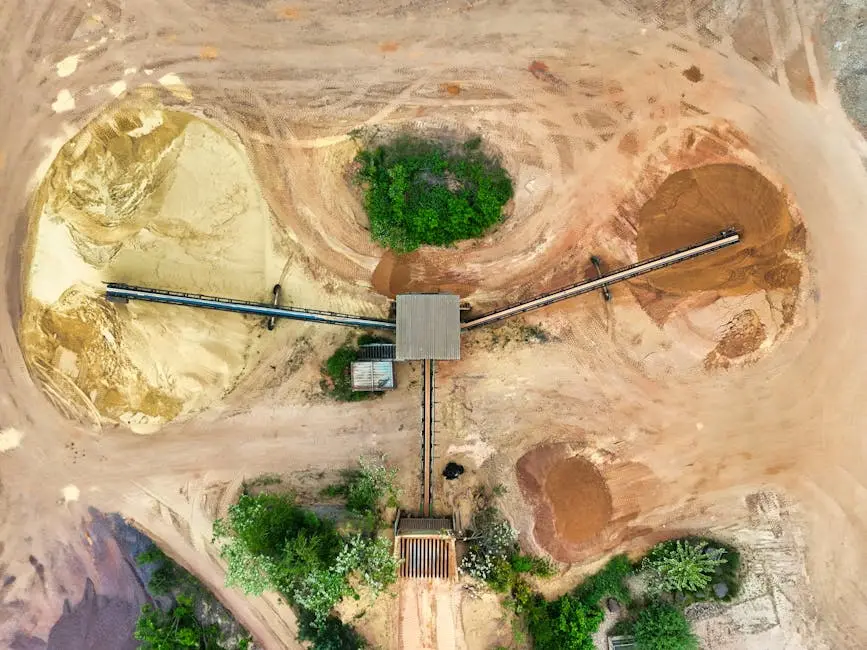Embarking on an outdoor construction project is an exciting venture that comes with its fair share of decisions. One of the most crucial decisions revolves around selecting the right materials. The choice of materials can significantly impact the durability, aesthetics, and functionality of your project. In this guide, we’ll explore how to choose materials that best suit your outdoor construction needs.
Understanding the Scope and Purpose of Your Project
Before delving into material options, it’s vital to have a clear understanding of your project’s scope and purpose. Are you building a deck, a walkway, or a retaining wall? Each type of project may have specific requirements that affect your material choices. For instance, a deck would necessitate materials that can handle foot traffic and resist wear, while a retaining wall might need stronger, more durable options to support the weight of soil. Understanding the primary function of your project helps in narrowing down suitable materials, ensuring that the end result meets its intended use effectively.
Moreover, it’s important to consider future changes or expansions. If you’re setting up a garden area or installing a swimming pool, will the chosen materials accommodate such modifications? Thinking ahead can prevent costly adjustments and replacements down the line. Also, consider whether the project has aesthetic goals other than purely functional—all these aspects combined guide you to a well-rounded choice in materials.
Considering the Local Climate and Environmental Factors
The climate in your area plays a significant role in material selection. If you live in a region with high humidity or frequent rainfall, choosing materials that resist moisture and mold is essential. On the other hand, for sunny areas, UV-resistant materials might be more appropriate. Additionally, areas prone to strong winds or seismic activity might require reinforced materials to enhance structural stability against natural forces.
Beyond weather conditions, consider other environmental factors like terrain and soil type. Some materials, such as wood, may degrade faster when in constant contact with damp or acidic soil. Such considerations make it crucial to weigh the localized environmental aspects while making your selection, setting the foundation for a resilient outdoor structure.
Furthermore, it is beneficial to possibly conduct soil tests and consult local guidelines, as building codes may specify certain materials for safety reasons. Viewing climate and environmental factors as guiding principles aids in reducing maintenance needs and prolonging the lifespan of your outdoor structures.
Evaluating Durability and Maintenance Requirements
Durability is a key consideration, as outdoor structures need to withstand various weather conditions. Some materials, like natural stone, are inherently durable but may require regular maintenance; others, like composites, offer minimal upkeep while providing good longevity. It’s advisable to research specific maintenance practices for each material to determine how much time and effort you can dedicate to upkeep.
For instance, traditional wooden decks may need to be treated against insects and rot, while aluminum requires different cleaning techniques to avoid rusting and corrosion. Be sure also to consider material warranties, as they often reflect their expected durability and longevity. Opting for materials with longer guarantees can reassure about their reliability and durability.
Finally, incorporating expert advice from seasoned professionals can lend insights into expected performance over time. They can offer guidance on avoiding potential pitfalls in durability and maintenance, ensuring your structure stays pristine and robust for years to come.
Balancing Aesthetics with Functionality
The visual appeal of the materials should complement the overall design of your project and your personal taste. However, aesthetics should not overshadow practicality. Finding a balance between how materials look and their functional benefits is crucial. Sometimes, combining different materials can enhance both the aesthetic allure and functional prowess of your outdoor space, merging design seamlessly with usability.
Consider your outdoor space as an extension of your indoor living area, integrating colors and textures that resonate with the existing design language. Options like decorative stones or stamped concrete can elevate the visual impact while not compromising on sturdiness or safety aspects.
Interestingly, selecting the right materials can also psychologically influence how the space is perceived and enjoyed. Materials that retain heat or coolness affect comfort levels significantly; hence, thoughtful design incorporating aesthetic and functional elements enhances not just structural beauty, but the overall enjoyment of the space.
Budgeting: Finding Cost-Effective Material Solutions
While budgeting, it’s essential to consider not just the upfront costs but also the long-term value offered by different materials. Some may have higher initial prices but save money over time due to their durability and low maintenance needs. Evaluating cost versus value helps in making sustainable financial decisions.
Importantly, remember to factor in potential unforeseen expenses, like additional tools or professional assistance, when budgeting for materials. You might find repurposing materials from previous projects a cost-effective strategy, allowing you to maximize resources without compromising on quality.
Consulting an experienced contractor or a financial advisor specializing in construction can guide in managing your budget effectively and efficiently. Having a clear financial game plan enables you to leverage cost-effective material solutions, delivering the best possible results within your cost constraints.
Exploring Sustainable and Eco-Friendly Options
With a growing focus on sustainability, many homeowners are opting for eco-friendly materials. Consider alternatives that minimize environmental impact, such as recycled lumber or locally sourced stones, to enhance the ecological value of your project. Apart from environmental benefits, these choices often bring unique textures and appearances to the overall design.
Moreover, using sustainable materials can sometimes offer superior performance as they are designed to adapt to environmental stresses more efficiently. Examples include cork, bamboo, and thermally modified wood, which boast natural resilience along with eco-friendly credentials.
Additionally, integrating green solutions like rainwater-harvesting systems into your outdoor construction can enhance the sustainability quotient greatly, promoting environmental consciousness while catering to functional needs. Embracing sustainable practices not only benefits the planet but brings economic benefits, aligning modern construction practices with ecological harmony.
Making Informed Material Choices for Enduring Outdoor Projects
Choosing the right materials for your outdoor construction project involves careful planning and consideration of various factors, from the local climate to your aesthetic preferences. By understanding the pros and cons of different materials and keeping your project’s unique requirements in mind, you’ll be well-equipped to make informed decisions that ensure the success and longevity of your project.



